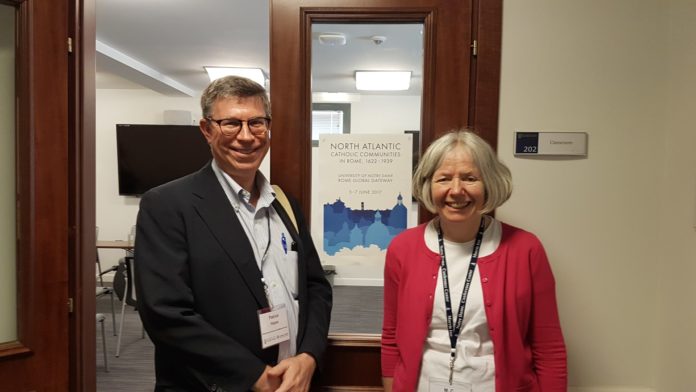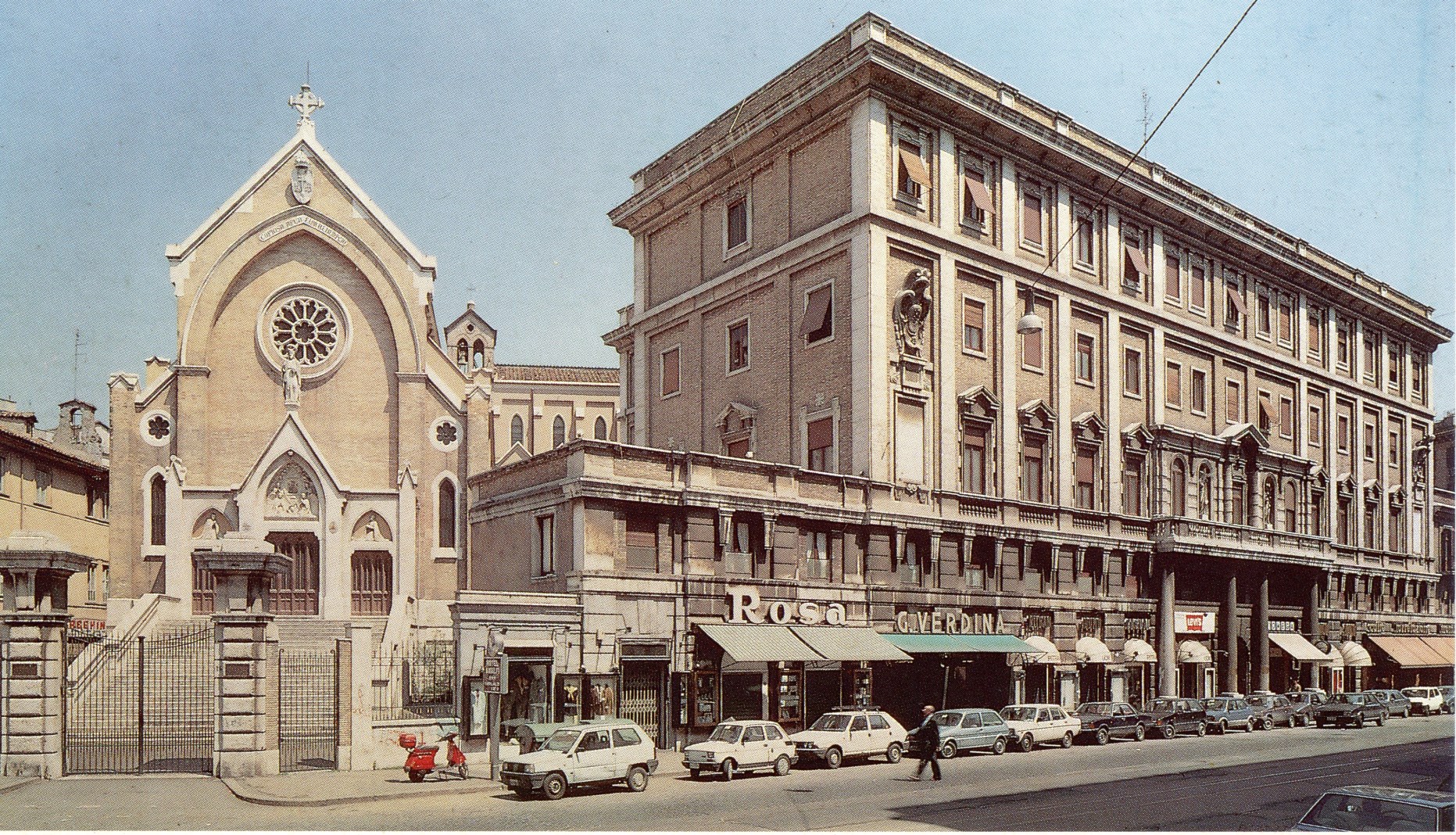
Two Provincial Archivists flew the Redemptorist banner with distinction at a University of Notre Dame history conference in Rome, highlighting a pivotal Scottish confrere in Rome and the effect of the city on a Canadian confrere.
At the conference held at the American university’s Rome Global Gateway facility near the Coliseum and sponsored by the university’s Cushwa Centre, Baltimore Archivist Patrick Hayes presented a paper, Footprint on the Esquiline: The Legacy of Father Edward Douglas, A Scot in Rome, in a session focusing on North Atlantic Communities in Rome in the 19th and early 20th centuries.
A holder of a history doctorate from the Catholic University of America, Washington, DC, Hayes explored the life and work of Fr. Douglas, a Scottish convert and descendant of the Dukes of Queensbury and the Earls of Douglas and Mar. The sole heir to the family’s considerable wealth, Fr. Douglas distributed it liberally on congregational projects, financing the 1854 purchase of the Roman property on Via Merulana and the subsequent construction of the headquarters and the adjacent St. Alphonsus church.
A member of the English Province, Fr. Douglas also used the family money to retire the debt of the newly-built St. Mary’s Clapham and to establish the monastery at Kinnoull, Scotland in 1867. He also allotted a thousand pounds towards the establishment of the Irish Foundation in Limerick in 1853. Based on three opinions, the family fortune was believed to be derived from the income of Haig and Haig, the Scotch whisky distillery.

Appointed to the Roman house in 1854 for the rest of his life, Fr. Douglas served as a consultor for two terms (1856-1862) and rector of Casa S Alfonso. Of Fr. Douglas’ legacy, Hayes contended: “A man well-known in Rome and acquainted with many in the curia, he was consulted on the advisability of holding a general council in the Church. His influence upon the direction of the Redemptorists’ own missionary endeavours was equally far-reaching and at times prophetic. … It was Douglas who saw the advantages of taking on missions in the Caribbean as ‘a stepping stone’ to South America.”
On March 23, 1898, Fr. Douglas died of the flu at the age of 78 and was buried in the crypt of the Casa S Alfonso house chapel along aside the Superiors General.
In the same session, Edmonton-Toronto archivist M.C. Havey, who earned a graduate degree in history from the University of Waterloo, outlined the first seven months in Rome of Fr. Matthew Meehan in a paper, The Cultural Immersion of Fr. Matthew Meehan, A Canadian in Rome. Based on Fr. Meehan’s diary from October 1938 until May 1939, the paper described his energetic and enthusiastic discovery of the city through a glimpse of events, liturgies, people and social norms while pursuing a licentiate and later a doctorate.
With the blessing of Rector Major Patrick Murray “to get out and see the sights,” Fr. Meehan used every opportunity to admire and absorb many of the 300 churches, their religious art and liturgies, tour the heritage sites of the Coliseum and the Forum, attend concerts and special events, including the veneration of Blessed Mother Cabrini. In addition to observing the city’s citizens, he wrote of sightings of two Popes, cardinals, bishops, Italian royalty, Mussolini, British Prime Minister Neville Chamberlain, who travelled to Rome after the Munich Agreement, and Irish Prime Minister Eamon DeValera.
Upon the death of Pope Pius XI in February 1939, Fr. Meehan joined the thousands, who viewed the deceased Pontiff in his casket. On the morning of the burial, Fr. Meehan paid final homage, receiving an easy entry into the chapel by only showing his breviary, in contrast to today’s heightened security measures. Of that morning, he wrote: “I was able to kneel right beneath the red and gold dais where rested his Holiness, saying my Office in the flickering candle glow which lighted his face and the majesty of the scene. I knelt there for about an hour and a half, and then gave my breviary to an attendant to touch the pillows on which his head rested.”

Upon departing Rome in May 1940, Fr. Meehan pledged in his diary that the European experiences “must be your treasure house on which your mind enriches itself, making you distinct among others. Your experiences must not be a glorious movie – seen and forgotten – but a continual uplift and recurring inspiration.” For the next five decades as a seminary professor, a rector and religious broadcaster until his death in1998, Fr. Meehan drew inspiration from the enriching Roman appointment, expanding the Redemptorist apostolate horizons in Canada.
MC Havey, Archivist
(Community Connections, Volume 16 Issue 7)





